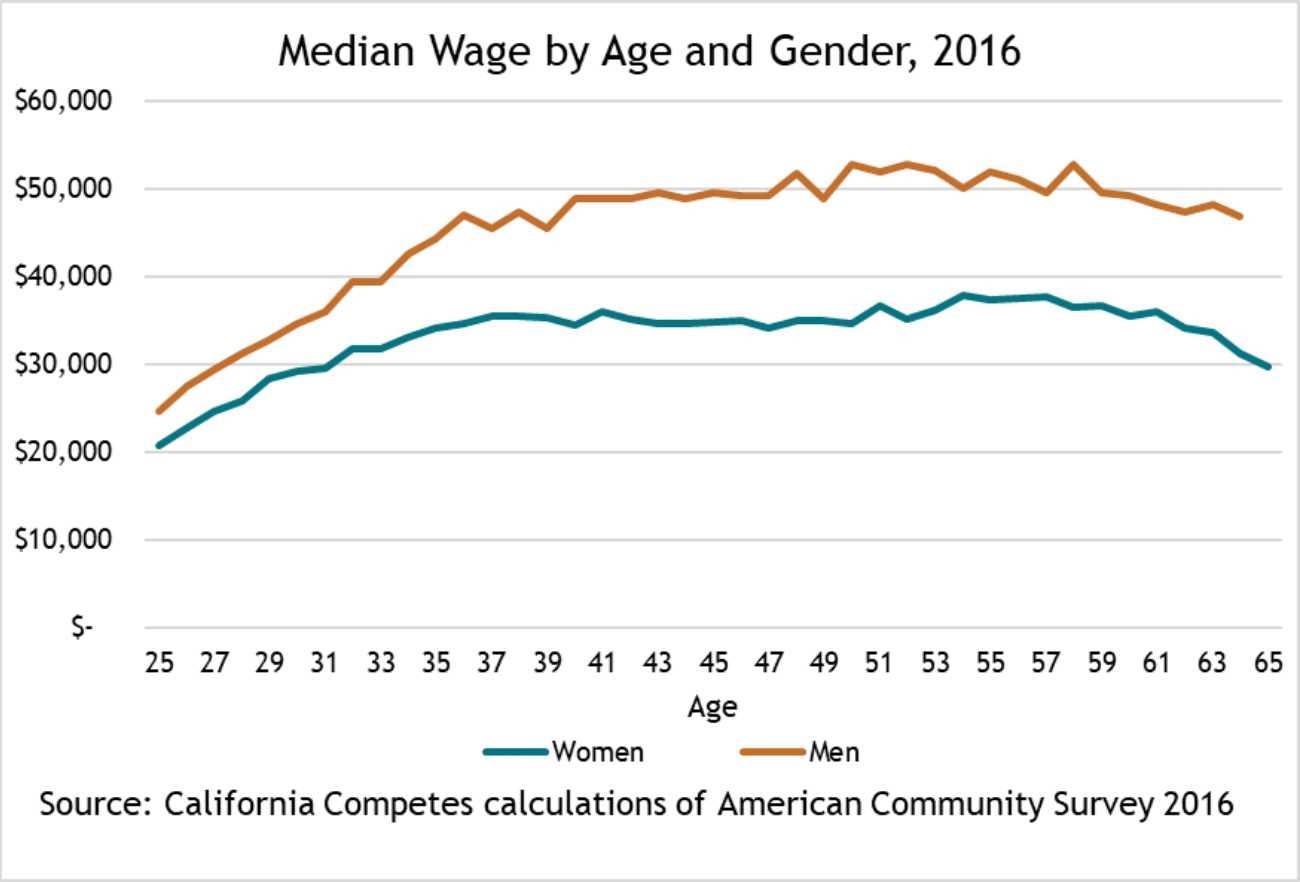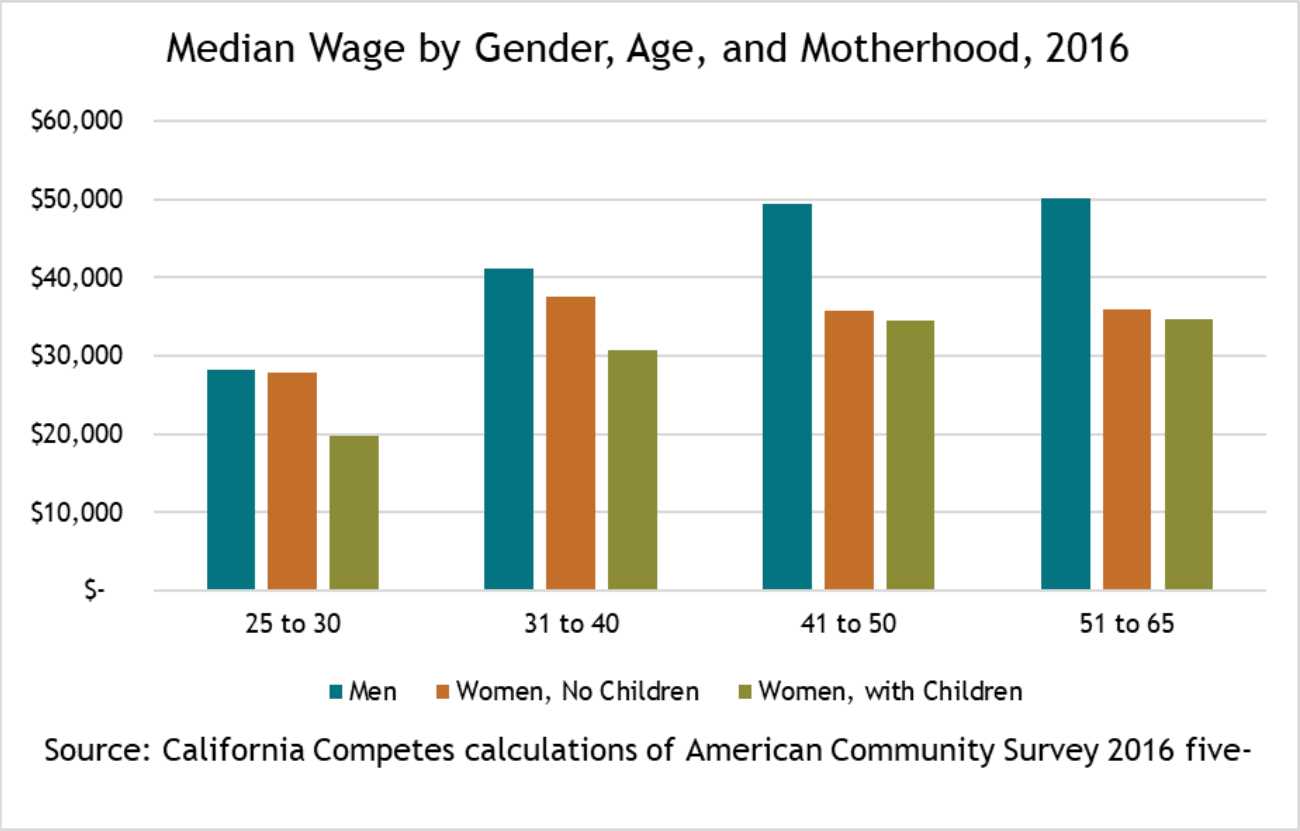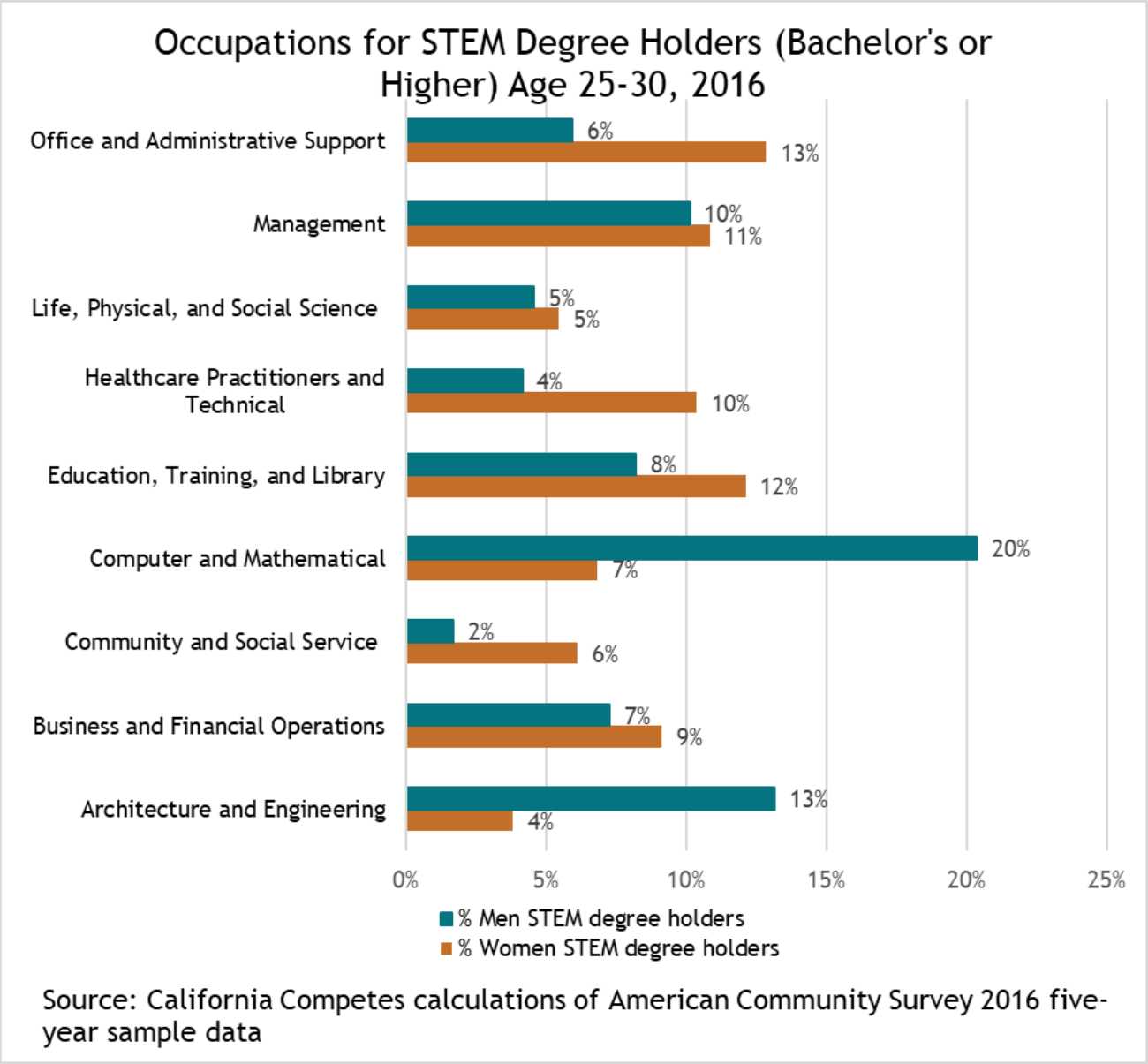April 10 is Equal Pay Day, which represents how far the average woman has to work into 2018 to earn as much as men earned in 2017. Recent work from the Georgetown Center for Education and the Workforce has highlighted the uphill battle that women face to earn equal pay to men. National data show that women consistently earn less than men, even when comparing those with the same level of education, through a combination of choosing lower-paying fields of study, taking lower-paying jobs within the same fields, and, even when all other factors are equal, discrimination.
Does the picture look similar in California? Mostly, yes. In our recent report Opportunity Imbalance, we highlight the paradox of educational outcomes and income: although women perform better in high school and finish college degrees at higher rates, they continue to make lower wages than men.
However, there may be points of optimism. Wage gaps are smallest for younger adults and increase as workers get older.

There are even a handful of industries, such as healthcare; community and social services; and life, physical, and social science—where median wages for young women aged 25 to 30 are the same or somewhat more than for men. However, that parity disappears among older workers as men’s wages outpace women’s. Part of the gap is attributable to childbearing. Women of all age groups with children make less than women without children. However, childbearing does not explain all of the disparity, as women without children in older age groups lose ground relative to men.

What we don’t know is whether the smaller wage gap among younger workers is a sign of change to come or if larger gaps will open among this young generation of workers as they get older. In California, with our robust tech economy, we don’t know how young women will fair in gaining equitable access to the opportunities afforded by the growth of high-paying STEM jobs. Although increasing numbers of women now choose to pursue degrees in science and engineering, they are still underrepresented in those fields of study. Our analysis of 2016 data from the American Community Survey shows that 50% of men with at least a bachelor’s degree got their degree in a science or engineering field, compared to 40% of women.
The stark reality is that even a degree in science and engineering is not a wage equalizer among young Californian women.
To make matters worse, women who do have science and engineering degrees are opting to work in less lucrative fields than men with those same degrees. For example, 20% of men with science and engineering degrees are employed in computer and mathematical occupations compared to 7% of women, where they made a median wage of $69,473. Conversely, 13% of women with science and engineering degrees were employed in office support, where they make a median wage of $29,774 compared to 6% of men.
The stark reality is that even a degree in science and engineering is not a wage equalizer among young Californian women. Comparing men and women with a degree in science and engineering, women with a bachelor’s degree make 39% less than men, and women with a graduate degree make 33% less than men at the same level.

As other research has highlighted, there are several reasons why women make less than men: the disproportionate affect that childbearing has on women’s careers, the occupations and fields of study that women tend to seek, and workplace discrimination. California’s higher education system cannot fix all of these challenges, but there is a role for colleges and universities to play in setting women up with equitable opportunity to access the same jobs as men. At a minimum, colleges can use data to shine a light on the issue, such as making alumni wage data disaggregated by gender accessible to the public and ensure that the conversation about equal pay does not happen only on Equal Pay Day.